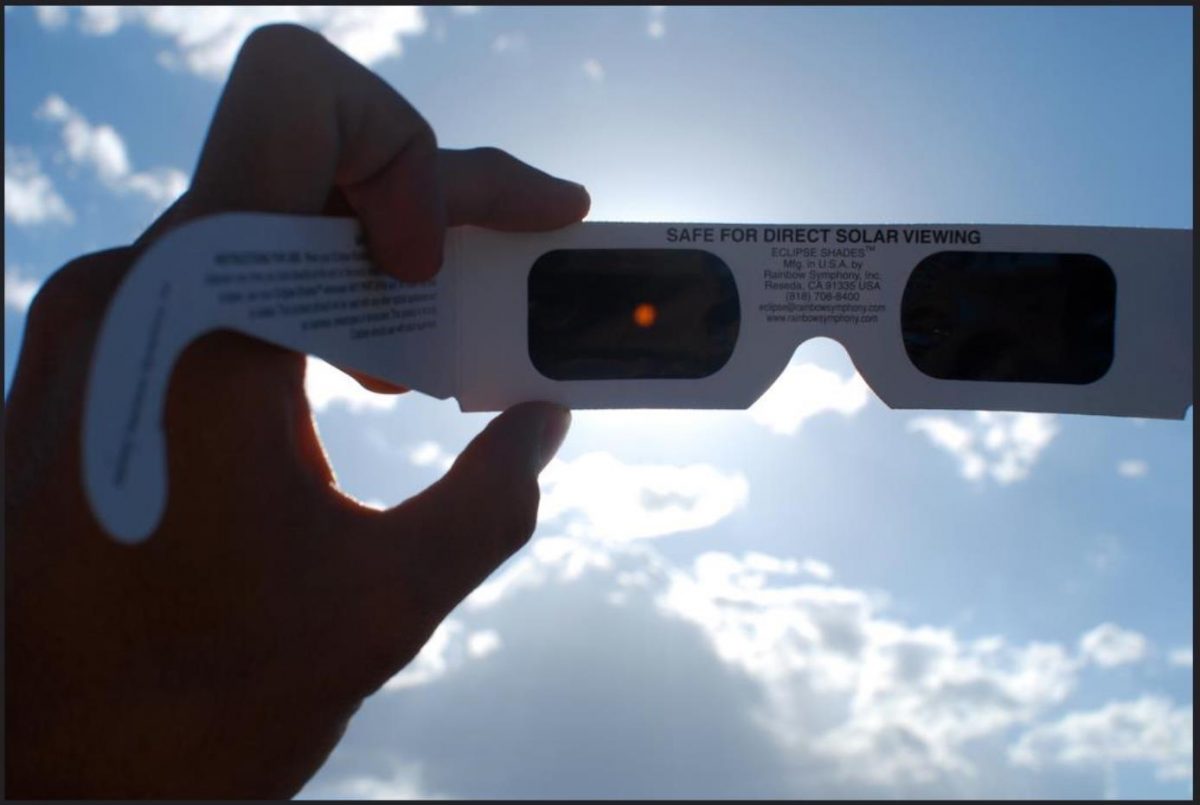Once-in-a-lifetime event casts a shadow
Total solar eclipse occurred on August 21, 2017
Solar eclipses are rare in themselves. Each calendar year has at least two solar eclipses; however, some years can host three, four or extremely rare five solar eclipses. A calendar year with five solar eclipses won’t be happening until 2206, but the summer of 2017 hosted a unique event. What made this solar eclipse so special?
A solar eclipses only occurs during a new moon, which is the phase in the moon’s orbit when it is between the Earth and the Sun. On new moon nights, the moon cannot be seen in the sky because none of the sun’s light is being reflected off of it and onto Earth.
Solar eclipses don’t occur every new moon because the moon’s orbit around Earth is tilted five degrees. The moon spends most of its orbit above or below the plane between the Earth and the Sun.
On two occasions per moon cycle, the moon passes through the Earth and Sun’s plane. When the moon passes through the plane between the Sun and Earth while in a new moon phase, a solar eclipse occurs.
The solar eclipse that occurred on Aug. 21 is known as the Transcontinental Total Solar Eclipse. This total eclipse spanned from Oregon to South Carolina and had a width of 70 miles. All of the lower 48 states and a part of Canada saw at least a partial eclipse. A total eclipse that spans the width of the country won’t happen again for a few hundred years. As a result, Americans flocked to states such as Kentucky and Tennessee to see the once in a lifetime event.
One of these Americans that traveled to Nashville, Tenn. is Freedom Middle School teacher Mr. Rich Heisler.
Heisler described the experience as “the coolest thing [he’s] ever seen.”
During a total eclipse, the sky goes dark as the moon passes across the shining sun. Temperature decreases and birds return to their nests as the sky gets dark. The sky got dark enough that Heisler recounted seeing the planets Venus and Jupiter during the eclipse.
What is visible in the sky is an illuminating ring around the dark moon and a “360 degree sunset,” as Heisler described.
During a total solar eclipse, the sun’s light reaches surrounding areas that are not receiving the shadow cast by the new moon. The contrast in shadow results in the extraordinary sunset, Heisler mentioned in the previous paragraph.
The Transcontinental Total Solar Eclipse sparked excitement and interest in many people across the U.S. It doesn’t take an affection for science to appreciate the phenomenal beauty of a total solar eclipse. The next total solar eclipse in the U.S. will occur in 2024. The eclipse will span from Mexico to Maine and pass through the nearby state of Ohio.



